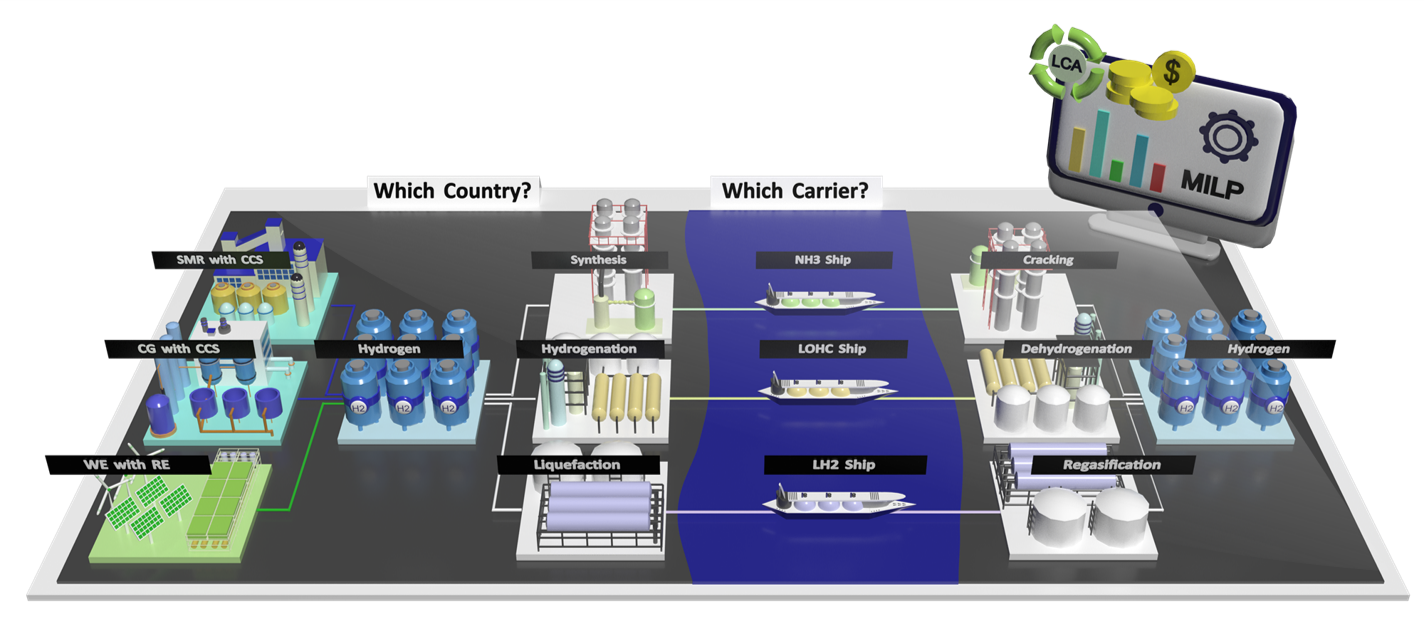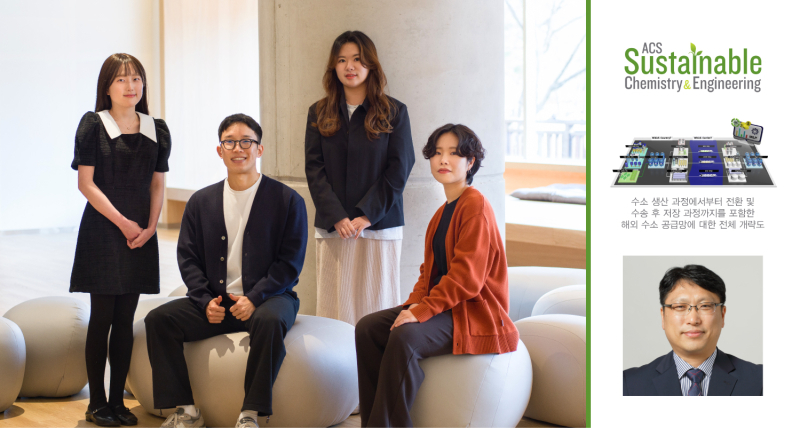Hydrogen (H2) has been regarded as a promising alternative energy carrier to replace fossil fuels. It is also important as a future clean energy source to achieve carbon neutrality since it does not emit carbon dioxide (CO2). However, the cost of storing and transporting H2 have been the major challenge for the realization of H2 economy.
A research team, led by Professor Hankwon Lim from the Graduate School of Carbon Neutrality at UNIST has presented optimal supply chains considering economic and environmental aspects to materialize international trade of decarbonized H2.
In this study, a comprehensive optimization for the overseas H2 supply chain considering the three major importing countries including Korea (KOR), Japan (JPN), and Germany (DEU) was conducted with mixed-integer linear programming considering both economic and environmental aspects simultaneously. Through this optimization study, the research team verified the most feasible H2 supply chain for each importing country according to years and case scenarios.

Figure 1. Overall schematic diagram of this study.
According to the research team, the optimization proceeded, respectively, for 3 case scenarios (base, conservative, and optimistic) and 3 years (2030, 2040, and 2050) by considering the demands of 3 major importers (KOR, JPN, DEU), capacities and resource prices of 16 exporters (AUS, BRA, CHL, and so on), amount of comparison of supplied H2, and H2 carriers (LH2, toluene/MCH (TOL/MCH), and NH3).
Their findings showed that in 2030, blue H2 from QAT is the most feasible supplier for JPN, while green H2 from ZAF is the most feasible supplier for KOR and DEU. In 2040, green H2 from AUS also becomes one of the feasible suppliers for KOR and JPN together with ZAF and finally dominates the supplies after 2050, while green H2 from ESP is considered to be the most feasible one for DEU after 2040.

Figure 2. Sankey diagrams of the most optimal chains for the base case scenario, considering both economic and environmental aspects. In the case of exporters, blue H2 is indicated in blue, while green H2 is indicated in green. In the case of importers, KOR, JPN, and DEU are indicated in red, orange, and turquoise, respectively.
“Although the difference between scenarios is not significant, the overall costs are different,” noted the research team. “One difference is that green H2 from AUS is selected as a more feasible supplier for KOR rather than ZAF in 2040 with the optimistic case scenario.”
The study also found that ammonia (NH3) turns out to be the most feasible carrier for H2 and the total cost including the carbon tax has a range from 2.15 to 3.43 $ kgH2–1 which is between the current green H2 and blue H2 price ranges.
The study also found that ammonia turns out to be the most feasible carrier for H2. According to the results of the economic and environmental assessments conducted, the price of hydrogen supply, including carbon taxes generated by greenhouse gas emissions, ranged from 2.15 to $3.43 per kilogram. Based on the results, countries that are scheduled to introduce hydrogen (Korea, Japan, and Germany) have derived scenarios for optimizing the hydrogen supply chain that are needed in the future.
This study has been supported by the Hydrogen Energy Innovation Technology Development Program of the National Research Foundation of Korea (NRF), funded by the Ministry of Science and ICT (MSIT) and also supported by the Korea Institute of Energy Technology Evaluation and Planning (KETEP). Published in the January 2023 issue of ASC Sustainable Chemistry & Engineering, their findings have also been featured as a front cover.
Journal Reference
Ayeon Kim, Heehyang Kim, Dongjun Lim, et al., “Materializing International Trade of Decarbonized Hydrogen Through Optimization in Both Economic and Environmental Aspects,” ACS Sustain. Chem. Eng., (2022).












